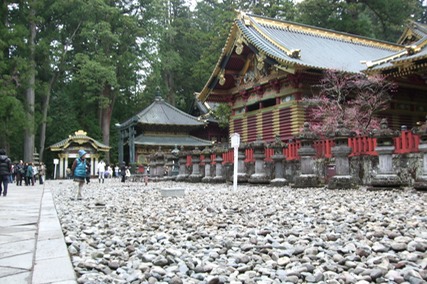
Three days in Tokyo can be exhausting. The crowds of people, trying to figure out which train to go on, soaring buildings surrounding you. On the fourth day of my short trip, I decided to get out of the big city for a one day excursion to the town of Nikko.
The trip takes about two hours using the Tobu train (about 2800 yen, one way). Moving out of Tokyo, you can feel the endless suburbs. I was glad to be able to pass by Kasukabe station. This is where Kureyon-shin chan is from. Once you get out of the Greater Tokyo area, you have to pass through the country side, seeing rice fields and small mountains in the distance.
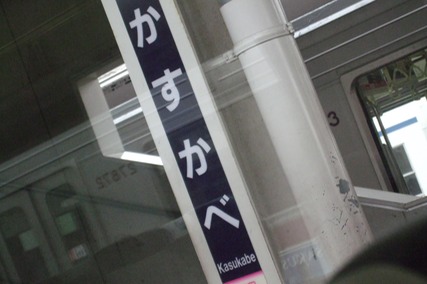
After a quick transfer, I took the local train for about ten minutes into the city of Nikko.
The front of the station is small. There are lots of touristy shops where you can buy the usual local souvenirs (I’ll drop by one of these places later on). The bus station has three stops and I hopped on the one that takes you to the shrine/temple area.
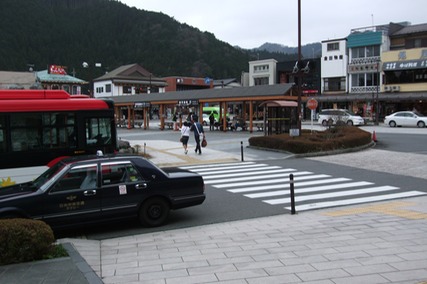
I asked the bus driver before taking off which station to get off and I was the only one to get off there. The rest of the passengers probably wanted to get off in front of Tosho-gu to see the famous stuff first.
The first temple I dropped by, Rinno-ji, was under construction. The inside was dark and full of lots of giant Buddha statues lacquered in gold, paintings and other sculptures. There isn’t much lighting in this place and walking in the corridors can be a bit spooky. There were many tours being offered my the priests there and I had to force my way through groups of people.
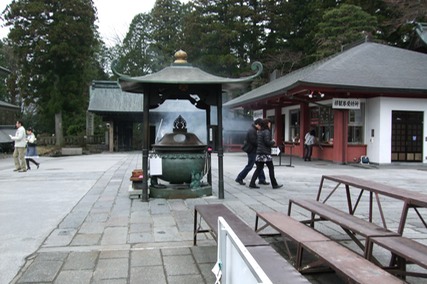
After exiting the temple, I moved on the Tosho-gu. There’s a bit of an upslope and it takes about ten minutes to reach the front of the entrance. On the way, you can notice all the cedar trees that were planted hundreds of years ago. I don’t think I’ve ever been surrounded by such an environment since coming to Japan. These massive cedar trees really help the mood of the surrounding area -- it makes you feel like you’re being transported into a very unique part of Japan.
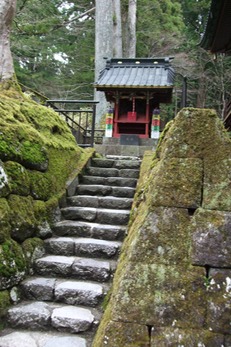
Entering Tosho-gu, you’re at once impressed by the surroundings. It’s a fairly spacious temple/shrine complex and the buildings are decorated with an uncountable amount of wooden carvings on the buildings. If you take a close look at things, you should be taken aback by the amount detail that was put into creating everything.
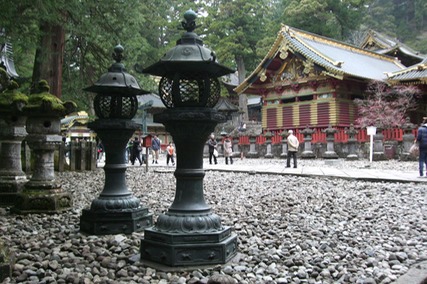
A bit to the left of the entrance, you can see the famous monkey carvings. They express the idea of, “Speak no evil, hear no evil and see no evil”.
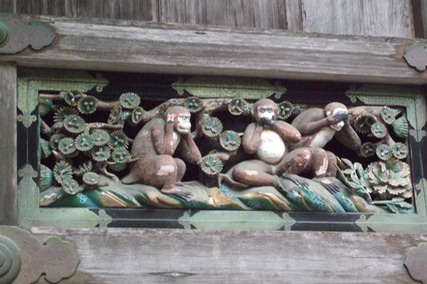
Walking further, there are gates and more overtly decorated buildings. You’re allowed to go into the main hall and for those who want to pay an extra 500 yen, you can see the famous sleeping cat carving and Ieyasu Tokugawa’s tomb. The climb has quite a few stairs but the it’s worth climbing since you can enjoy a bit of peace and quiet at the top.
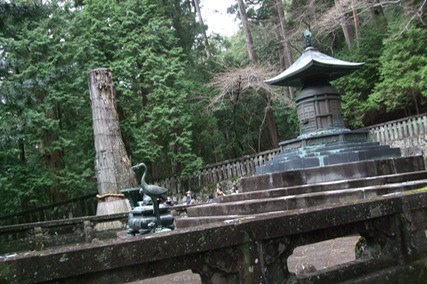
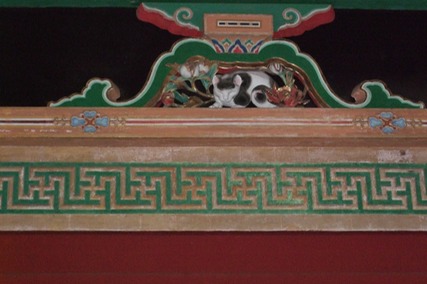
I dropped by a couple more temples/shrines and a museum that stores, the “treasures” of Tosho-gu after. One temple which was quite impressive is Daiyu-in. The main building is massive. I entered the entrance of one of the buildings to hear a Buddhist priest giving a crowd a sale-pitch on a 2500 yen piece of wood that’ll give your house magic charms -- he was teaching the listeners how to hang up the thing and how it’ll protect your house, family... well, I guess these temples have to make money somehow.
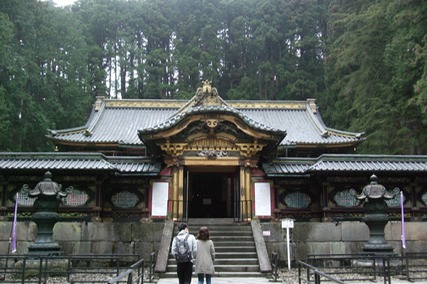
I’ve got my guide book next to me on my desk at the moment and there are three pages about all these temples and shrines. If you’re interested in the fine details of the stuff that I saw, go to a book store and read about this stuff if you want further info.
I walked around the area a bit more and realized I saw most of the important stuff. It was about one in the afternoon at this point so I headed back to the station and then quickly jumped on another bus that would take me to the hot-spring area, next to Lake Chuzen-ji. I was a bit surprised that it took about an hour to get there. There are lots of windy roads on the way and you’ve got to go up a mountain. I have to give credit to the skillful bus drivers that have to transport people safely up to the lake -- the roads up the mountain were not very wide.
The cost of getting there is 1000 yen, a bit more than I expected. I got off at the bus stop and looked for some signs that would take me to Kegon-no taki, Japan’s most famous waterfall. You’ve got to take an elevator down to see the best view of the falls and this costs, 520 yen.
The waterfall is a waterfall. Water falling down into a gorge 318 feet. The weather wasn’t that great on that day and I figure April isn’t the best time to visit since there wasn’t much foliage on the trees. I’m sure summer or autumn, would be a better time to visit.
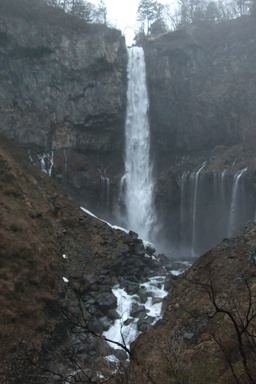
I checked out the waterfall for about five minutes and headed back up. I was hungry at this point and I went across the street to eat some yuba buckwheat noodles. Yuba is the skin of tofu. I figured that I would probably not eat this stuff again in my life (I’m sure you can find places that serve it in Sapporo) so I ordered the extra-large zaru soba. The taste was good at first, but I got kind of tired eating the stuff halfway through. The cost was 900 yen.
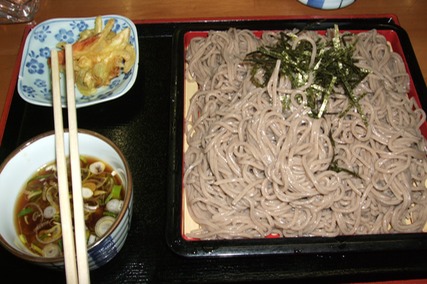
In total, this mini-side trip cost me 3420 yen. I hate to say this but traveling in Japan is expensive.
Back at the station, I bought a few souvenirs (some strawberry sweets, sake and yuba with sesame seeds) and took the train back to Tokyo at 4 p.m.
I got back to Tokyo and quickly dropped off my stuff at the hotel. I was thinking about having a simple night, maybe dropping by a bar in the neighborhood but I decided to go to Roppongi to see one more jazz show.
This time I went to Alfie. This jazz club is one of the more famous ones in Tokyo as it has been mentioned in Downbeat magazine. Since it’s in Roppongi, you’ve got to pay quite a bit. The cost of the show was 3700 yen, plus drinks. I came in late since I didn’t realize that the performances on Sunday started an hour earlier than usual but, never-the-less, I enjoyed a very fine performance by a piano trio. I saw the pianist in Sapporo once and he’s got a lot of flair. The bass player had an extremely strong sound and a brilliant technique and the drummer was working hard... but I’d have to see him again to really understand what I did or didn’t like about his playing.
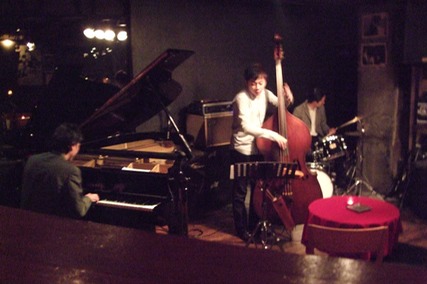
Well, I had another productive day on my vacation.
The following day, I took it easy just walking around a few more places (museums in Roppongi, Tokyo tower and Shibuya). I kind of saw everything that I planned to see in Tokyo, so I had a few pints killing time in a couple of British/Irish bars. I later met an old friend, G, from Sapporo. I was glad to see him and he seemed to be well with his life and job. I departed back to Sapporo at 8 p.m.
Man, this was a hell of a trip. I experienced and saw things that I’ll treasure for the rest of my life. Tokyo’s an amazing city if you’ve got money to burn. Who knows when I’ll get the energy to go again...
